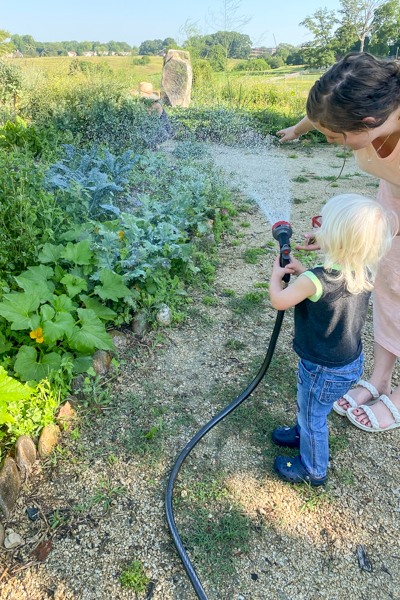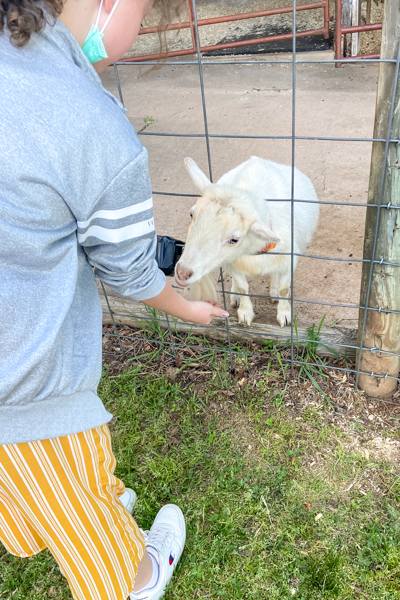At Crossnore we learn and live and work through the Sanctuary Model of care. This model informs how we interact with everyone we come into contact with from students to staff to visitors. Everyone is valued and treated the same.
When I first joined the family at Crossnore I found myself both excited and nervous about this model. I had done my research on Crossnore. And I wondered just how, in fact, we could honestly live out this model. Within the Sanctuary framework there are seven different commitments that we work within: nonviolence, emotional intelligence, social learning, open communication, democracy, social responsibility, and growth and change.
I found myself wondering if it was indeed possible to really live out these seven tenants consistently. Yet over and over again I find just how beautiful it is when we do. It may not always be perfect or easy. In fact it may get messy, but gosh, when it’s done right, it is beautiful.
Finding Ways to Live it Out
 In my role as Spiritual Life & Recreation Coordinator, I have the honor and the responsibility to model these seven tenants through an anti-racist, trauma-informed lens as I work hand in hand, heart to heart, with our amazing kids. Through games and activities I attempt to promote a community that provides opportunities for growth and change, democracy, and social responsibility.
In my role as Spiritual Life & Recreation Coordinator, I have the honor and the responsibility to model these seven tenants through an anti-racist, trauma-informed lens as I work hand in hand, heart to heart, with our amazing kids. Through games and activities I attempt to promote a community that provides opportunities for growth and change, democracy, and social responsibility.
I help foster emotional intelligence as I talk with my sweet friends who share their big feelings after a hard day. I strive to communicate openly and honestly- no matter how hard it can be. In living out our core commitments, I am reminded daily of how important these are in all of my life. Not just in time on campus with our kids or fellow staff.
Clinging to the Seven Commitments
As the world continues to turn and daily we hear news stories that break our hearts in a million ways, I find myself clinging to the seven commitments of the Sanctuary model of care. We all face trauma to one degree or another. Living and healing through the lens of our sanctuary model is some of the best, toughest, work we can do.
I often find myself spending time on campus with kids. We walk the square or visit the farm animals. These walks are sometimes prompted by a harder moment in a child’s day. As we walk outside, soak in the fresh air, and feel the sunshine on our skin, a layer of the yuck that we might both be carrying fades. The opportunity is afforded to me to model and receive Sanctuary care through these seemingly simple campus walks.
Shedding the Hard Things
 During one of these recent walks a child looked up at me. She said that walking was a part of her self care plan. She knew it helped calm down her frustrations inside. After going through a rather lengthy list of what was making her feel frustrated that day she turned the question on me. She asked what things frustrated me and what I used for self care. We discussed the things we do to calm down and fight stress – from playing basketball, doing artwork, or anything in between.
During one of these recent walks a child looked up at me. She said that walking was a part of her self care plan. She knew it helped calm down her frustrations inside. After going through a rather lengthy list of what was making her feel frustrated that day she turned the question on me. She asked what things frustrated me and what I used for self care. We discussed the things we do to calm down and fight stress – from playing basketball, doing artwork, or anything in between.
As the conversation faded, the value of those seven commitments flooded my mind. We are all always learning and growing and changing. Life is constantly changing for everyone. In thinking through my work and life in light of the Sanctuary Model, I find myself thankful. I am thankful for the ways my life is enriched as students and staff challenge and support me. And I am thankful for the opportunities I have daily to try and do the same.
Hard but Beautiful Work
Trauma-informed Sanctuary care is hard work. Anti-racist, trauma-informed, Sanctuary care is extremely difficult. But, gosh, what a gift it is when we do that good, hard, work together. Embracing Sanctuary together we can face hard conversations and difficult days. And we can celebrate great joys and life milestones.
I am not sure why I ever had so much hesitation wondering if there truly could be a space where folks are encouraged to live out a Sanctuary Model. I now wonder why more spaces are not encouraging a model like this. Often the best things in life are a bit messy, a touch hard, and insanely beautiful.



